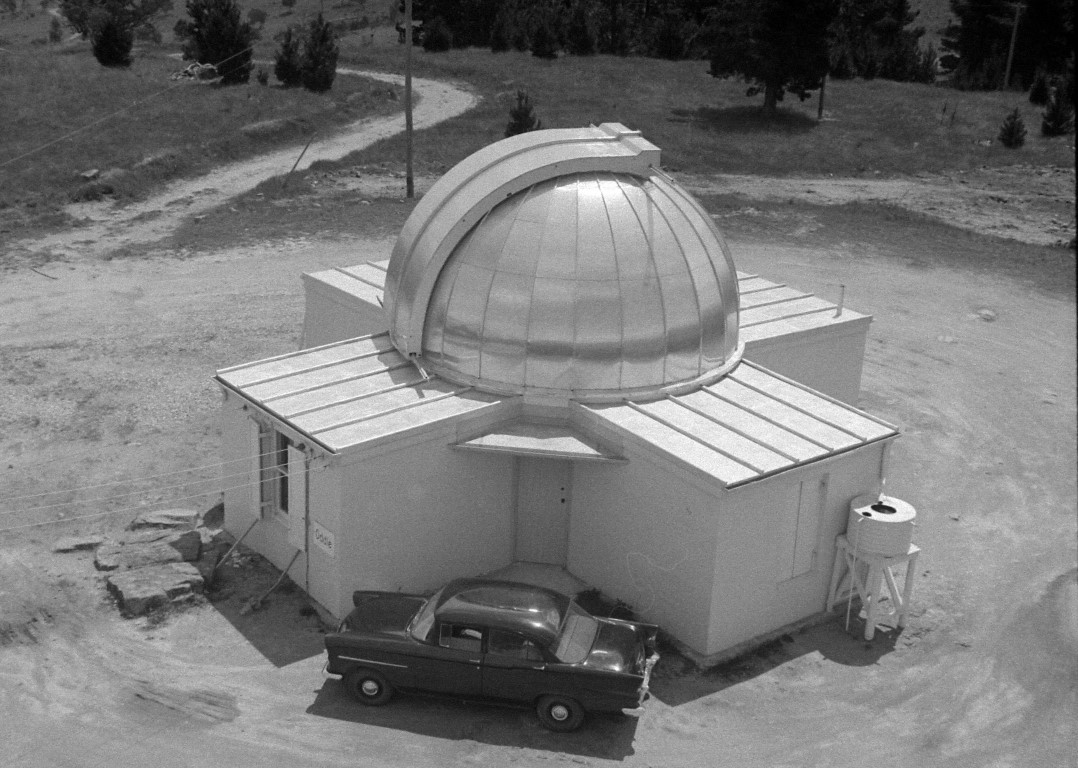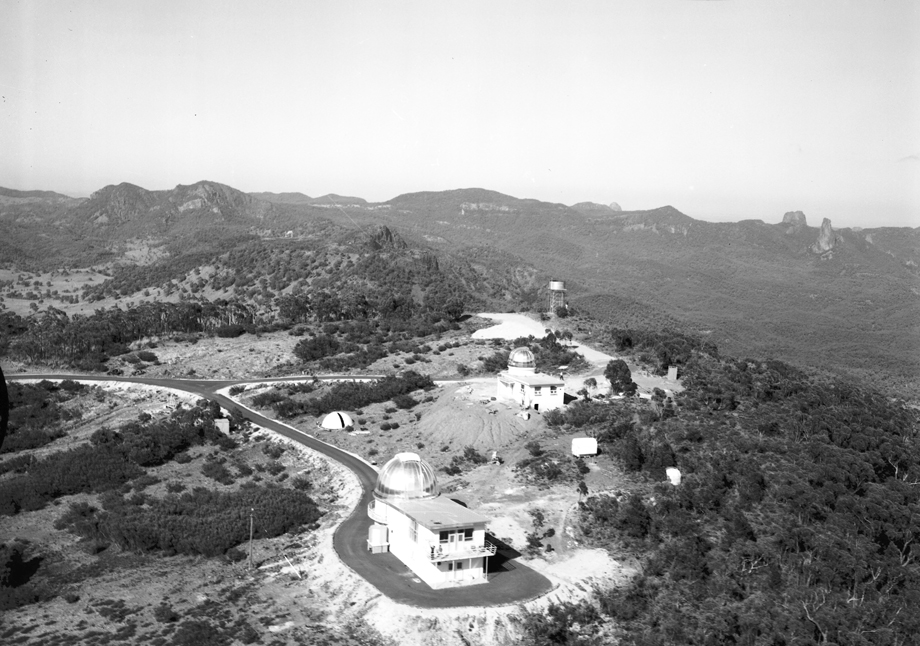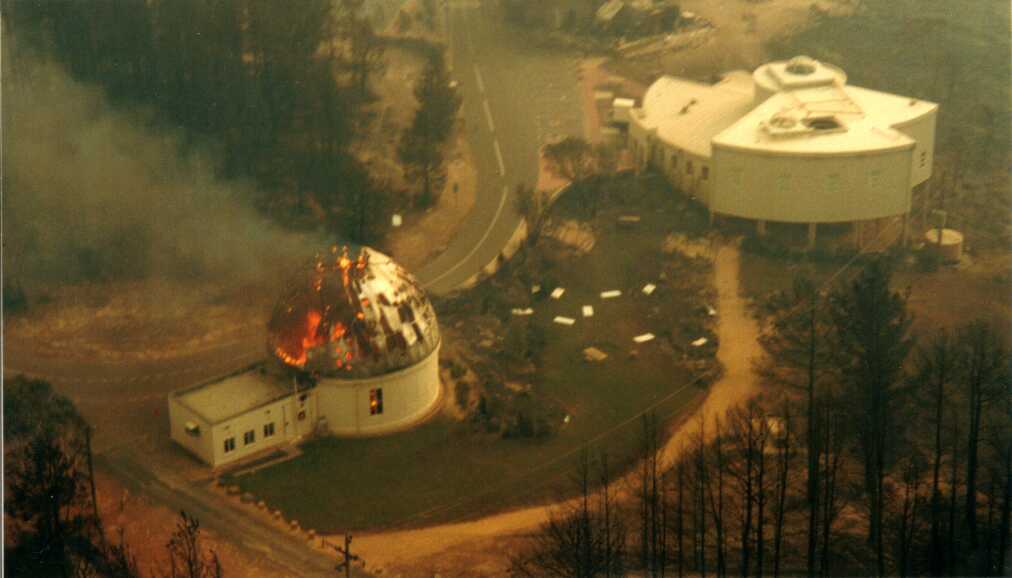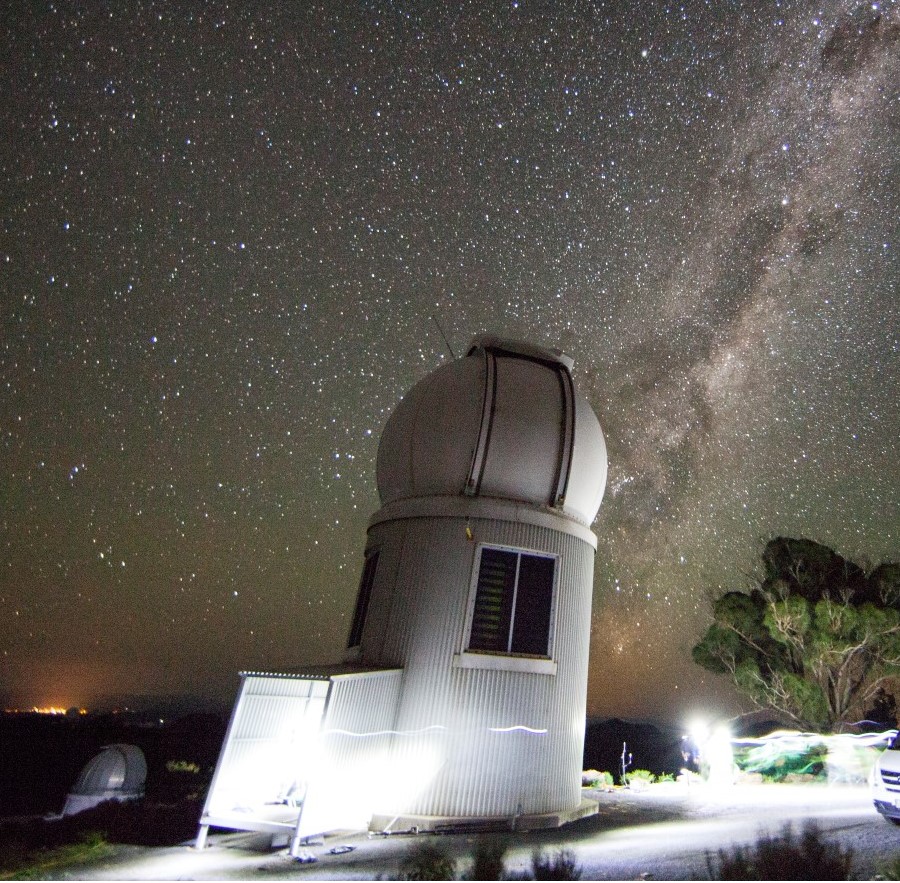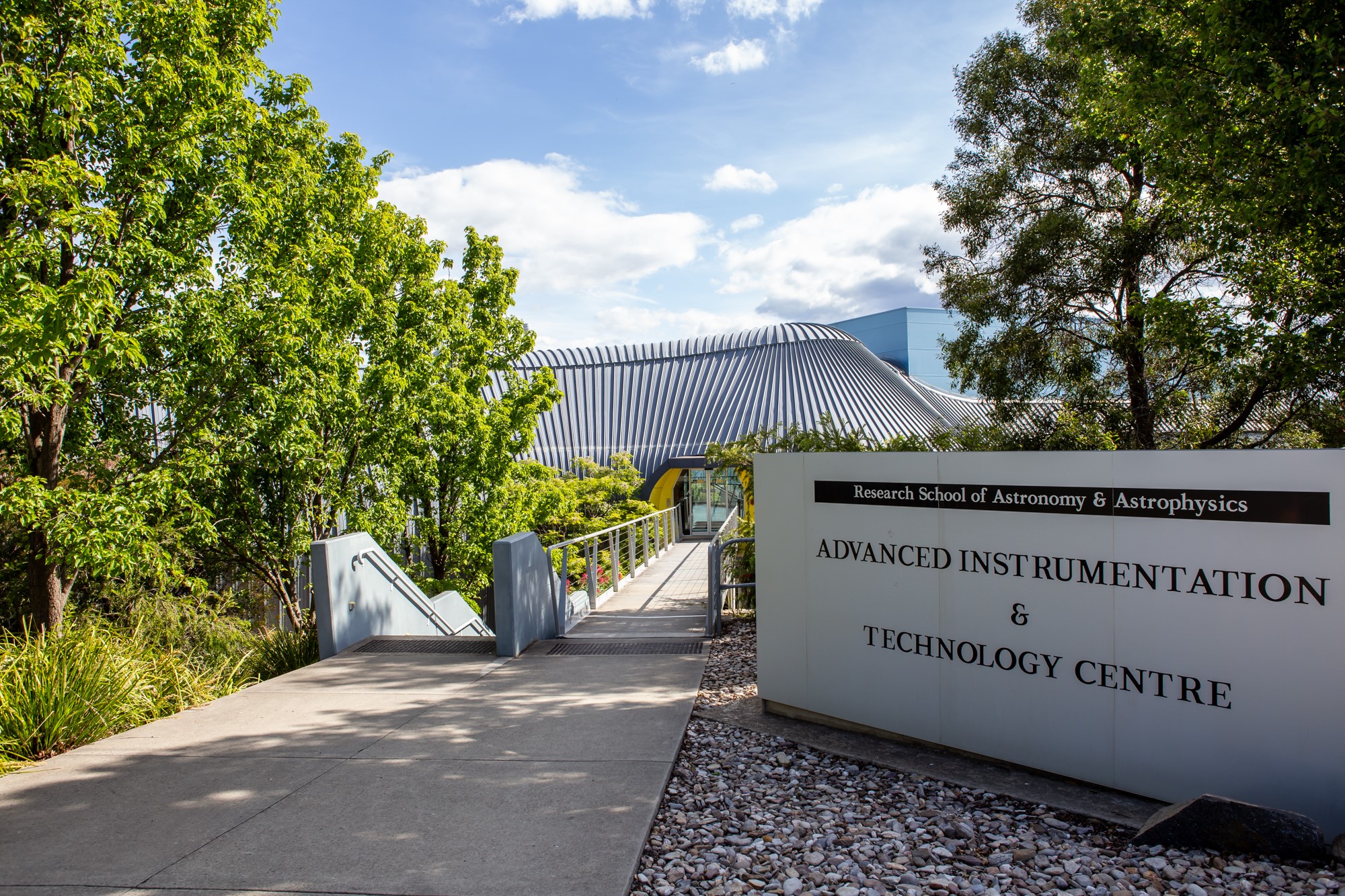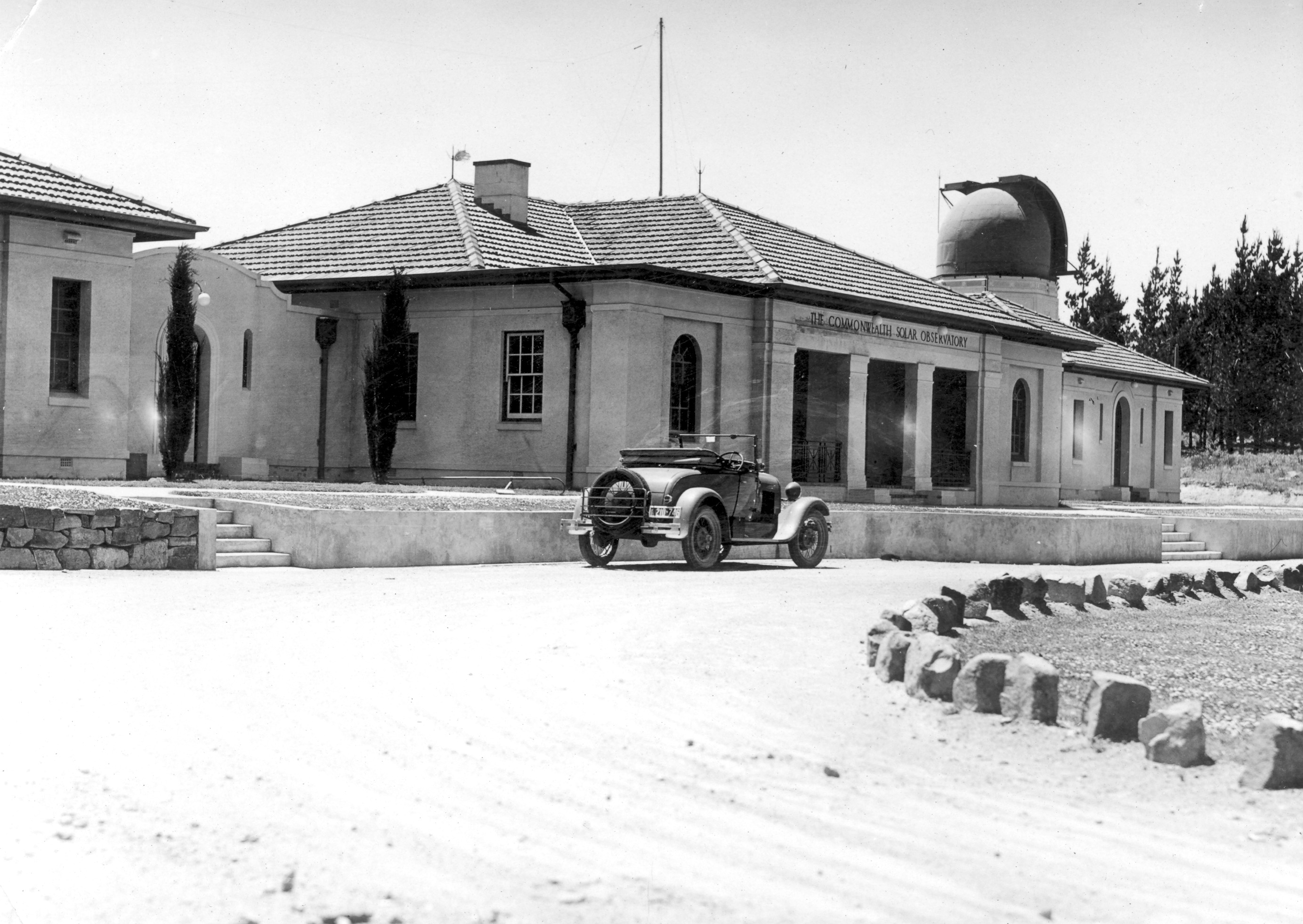
Our history & achievements
Some facts we are proud of
- RSAA astronomer Professor Brian Schmidt was co-recipient of the Nobel Prize for Physics in 2011 for his work at RSAA showing that the cosmos is expanding at an accelerating rate. The only other Australian Nobel Prize in Physics was in 1915, when the Braggs won it for their work on X-ray crystallography.
- RSAA astronomers are members of the national academies of science in Australia, the USA, the UK, the Netherlands and Spain.
- RSAA is leading Australian participation in the billion-dollar, international Giant Magellan Telescope, a next-generation optical telescope having 100 times the sensitivity of the Hubble Space Telescope and delivering 10 times sharper images.
- RSAA designed and built the first two Australian instruments for the international Gemini Observatory, NIFS and GSAOI, which make use of the new technologies of adaptive optics to remove the blurring effects of the Earth’s atmosphere.
- RSAA astronomers are regularly recognised for their innovative teaching methods.
RSAA is a family-friendly environment and strives to achieve a diverse and equitable community.
History
The Mount Stromlo Observatory (MSO) is one of the oldest institutions in the Australian Capital Territory. It was established (as the Commonwealth Solar Observatory) in 1924, although astronomical observations had been carried out on the mountain as early as the previous decade (the Oddie telescope was located on Mount Stromlo in 1911 - the dome built to house it was the first federal building in the newly established Australian Capital Territory). Its original interests lay in solar and atmospheric physics. During the Second World War, the observatory served as an optical munitions establishment and, after the war, it developed new research directions in stellar and galactic astronomy (with a change of name to The Commonwealth Observatory).
After the establishment of The Australian National University (ANU), joint staff appointments were made and graduate studies undertaken; the first PhD degree, and first DSc degree awarded by the University (other than honorary degrees) were in astronomy. A formal amalgamation took place in 1957, when MSO left the Commonwealth Department of the Interior and joined ANU.
In the 1960s, there was another change of name with the establishment of our second observatory at Siding Spring, in the Warrumbungle Mountains, to provide a permanent dark site in response to the adverse sky-brightness effects of Canberra's growth. We became "Mount Stromlo and Siding Spring Observatories". Together, Mount Stromlo and Siding Spring Observatories form one of the leading optical astronomical observatories in the world. Their main areas of research interest are in stellar and galactic astrophysics - in particular, the structure and evolution of planets, stars and galaxies, the origin and development of the Universe as a whole, and the physics of the tenuous material between the stars.
The greatest period of telescope acquisition on Mount Stromlo was in the mid-1950s, when no fewer than four major instruments came to the mountain. Since the 1960s, all new telescopes have been located at Siding Spring. When the 2.3m reflector was completed in 1984 it was amongst the most technologically advanced telescopes in the world.
In the 1990s, through the Gemini partnership, Australian astronomers gained access to the 10-metre class telescopes being built around the world. This access has helped to keep RSAA astronomers at the forefront of astronomical research. RSAA has successfully bid for Gemini instrument contracts to construct two instruments for the Gemini telescopes - the Near-infrared Integral-Field Spectrograph (NIFS) and the Gemini South Adaptive Optics Imager (GSAOI).
The firestorm of 18 January 2003 destroyed all the telescopes, the library, and workshops on Mount Stromlo.
The years following the fires of 2003 have been a remarkable period of redevelopment and growth for the research school. The workshops lost in the fires have been replaced by the Advanced Instrumentation Technology Centre (AITC), a world-class facility for developing astronomical instrumentation. It was constructed in two phases, the first opening in 2006. The second phase, AITC-2, was completed in 2011 and brings to the observatory new capabilities for building and testing small satellites and space payloads.
The new SkyMapper telescope at SSO replaces some of our lost telescope capabilities and saw first light in 2008. This remotely-operated survey telescope will conduct the first all-sky survey of the southern sky over a 5-year period. Plans are also underway to renovate and upgrade the 2.3m Telescope, which continues to be a very productive research and teaching facility. A new integral-field spectrograph (the Wide-Field Spectrograph, or WiFeS) was commissioned at the telescope in 2009, and the RSAA's second Gemini instrument, the Gemini South Adaptive Optics Imager (GSAOI), is now in operation in Chile.
The RSAA has a total staff of approximately 90, most of whom work at Mount Stromlo, where the main workshops and support facilities are located. There are about 45 astronomers on staff, and there are also around 30 graduate students undertaking PhD studies at the school.
